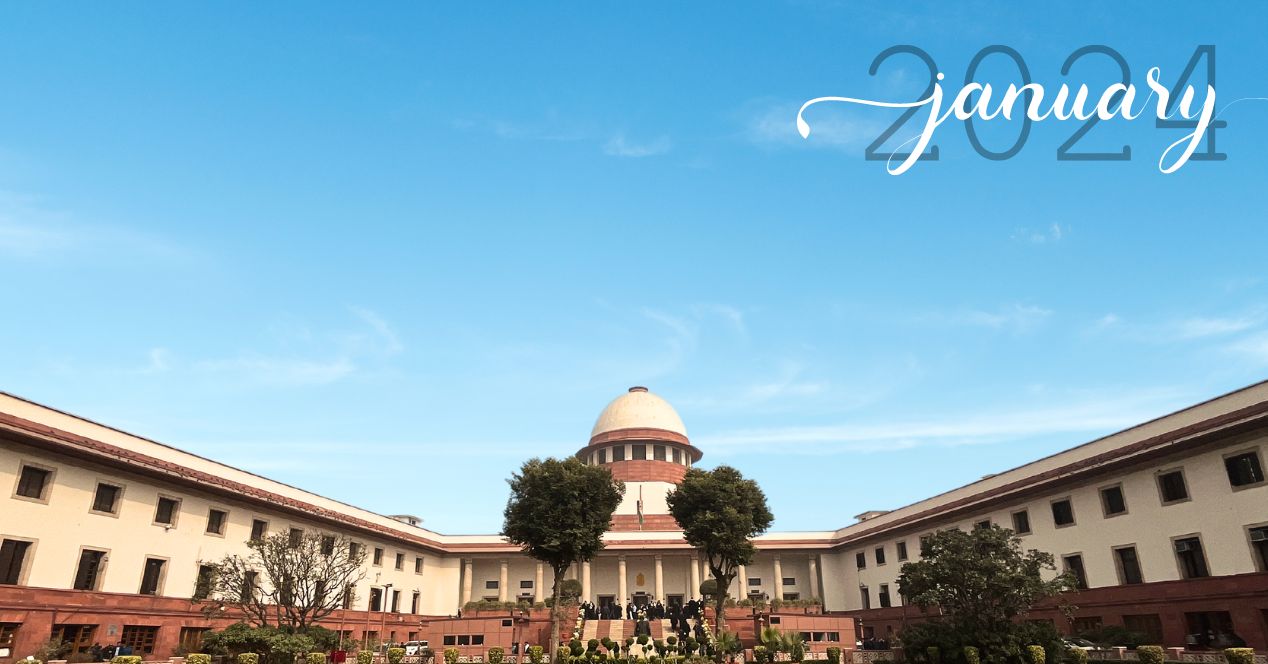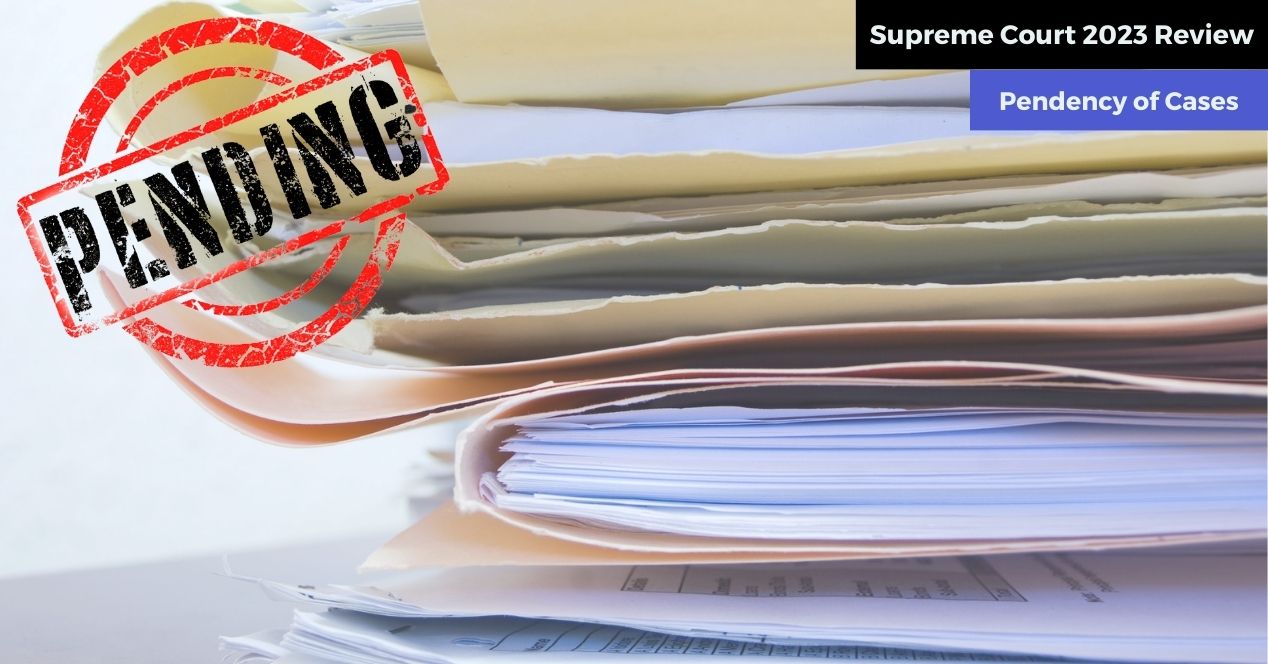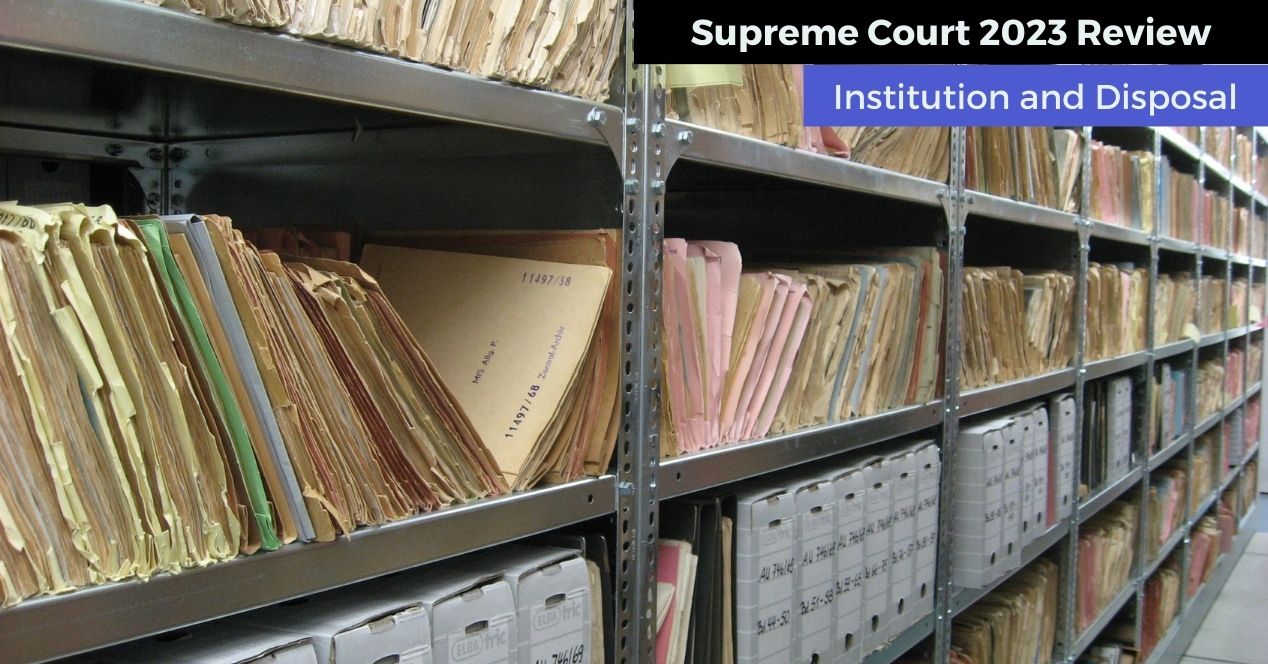Court Data
January 2024: Increase in institution of cases; disposal continues at a brisk rate
Despite seven judges being occupied by the AMU hearings for eight days, the Court managed to dispose of 5,453 cases in January

According to the National Judicial Data Grid (NJDG), last year was a busy one for the Court. Institution and disposal numbers surpassed those from the last full pre-pandemic year of 2019. 53,770 new cases were filed and pendency reached an all-time high, crossing the 80,000 mark. Despite this, 52,220 cases were disposed of, indicating a healthy disposal rate of 96 percent.
The momentum carried into January 2024. Disposal of cases this past month surpassed the number of cases filed.
Institution refers to the number of cases that are filed in the court. The disposal figure counts the matters that a court clears either by dismissing it or by completing hearings and delivering a judgement.
4964 cases instituted, 5453 disposed
Note: The data for December 2023 was collected from the NJDG on 31 January 2024 at 6 pm and the data for January 2024 was collected on 12 February 2024 at 3:18 pm.
In December 2023, the Court received 4122 cases (842 less than January 2024) and disposed of 3212 cases (2241 less than January 2024).
The Court disposed of cases at a rate of 109.8 percent in January 2024—a significant increase from the 78 percent rate of disposal from the previous month. However, the Court worked only for 11 days in December 2023 owing to its winter vacation from 18 December. This means that on average, it disposed of 292 cases per day.
According to the NJDG, in January 2024, a total of 4964 new cases were instituted at the Supreme Court—3350 civil cases and 1614 criminal cases. The Court disposed of 5453 cases—3463 civil cases and 1990 criminal cases. This indicates a robust disposal rate of 109.85 percent.
The Court worked for 20 days in January. For eight of these 20 days, seven judges—20 percent of the Court’s sanctioned strength—were occupied in the Constitution Bench proceedings to determine the minority status of Aligarh Muslim University.
Institution of cases highest in five years
Figure 2 maps the number of cases instituted at and disposed of by the Supreme Court in the month of January since 2020. This data for the years 2020-2023 is from the Annual Reports of the Supreme Court because a month-wise split for previous years is unavailable on the NJDG.
In the last five years, barring 2021, the Court has disposed of more cases than it received for the month of January. 2021 was also the year with the least disposal in January is 2021, with 2209 cases. This is not surprising given that the country was still recovering from the Covid pandemic (a second wave would break out a couple of months later, and last until May 2021).
In 2024, both institution and disposal were the highest in five years, surpassing the numbers in 2023 when 4661 cases were filed and 5058 cases were disposed of. Interestingly, in January 2023, the Court started with a sitting strength of just 28 judges. When Justice Abdul Nazeer retired on 4 January 2023, the Court was working with only 27 judges until five new judges were elevated in early February 2023 and two more a few days later.
In January 2024, the situation was different. With Justice S.K. Kaul’s retirement in December 2023, the Court began the new year with just one vacancy out of the sanctioned strength of 34 judges. This was filled with Justice P.B. Varale’s elevation on 25 January 2024.
The Court only disposed of 395 more cases in January 2024 than in January 2023.
Discrepancy in data
While the NJDG shows a total institution of 4964 cases, the data from the Justice Clock on the Supreme Court’s website tells a slightly different story. It shows that 4973 cases were filed in January 2024.
Similarly, the NJDG shows that the Court disposed of 5453 cases. This is less than the Justice Clock’s data point of the Court clearing 5784 cases.
If the NJDG is to be followed, the disposal rate for January was 109.8 percent but according to the Justice Clock, the disposal rate is 116 percent. NJDG suggests that the Court cleared an average of 272 cases a day but according to the Justice Clock, that figure would be 289 cases.
When we looked at data from the NJDG on 1 February 2024, the discrepancy in data was even more pronounced. The Grid had recorded an institution of only 1966 cases for January 2024 and a disposal of only 2420 cases. If we had published our piece then, the numbers would have told an entirely different story.
However, we anticipated a logistical delay in updating the monthly data on the NJDG A few days later, while the data discrepancy between the two platforms did not disappear, it was not as jarring as at the beginning of the month.
It looks likely that the migration of data from the Supreme Court to the NJDG takes some time, considering that the Supreme Court’s Justice Clock is hosted on the web page of its registry. The NJDG, on the other hand, contains data from the Supreme Court, High Court, and district and taluka courts and is managed by the Department of Justice.




